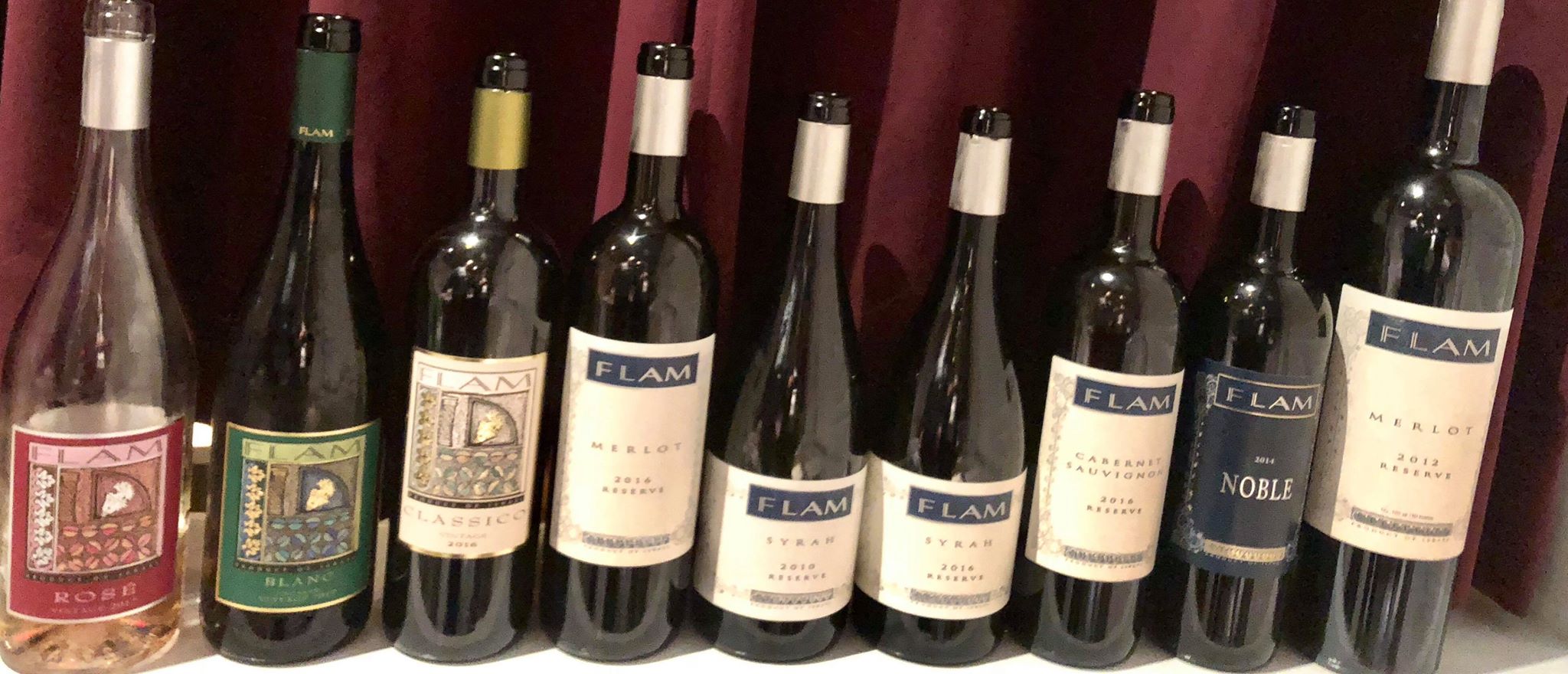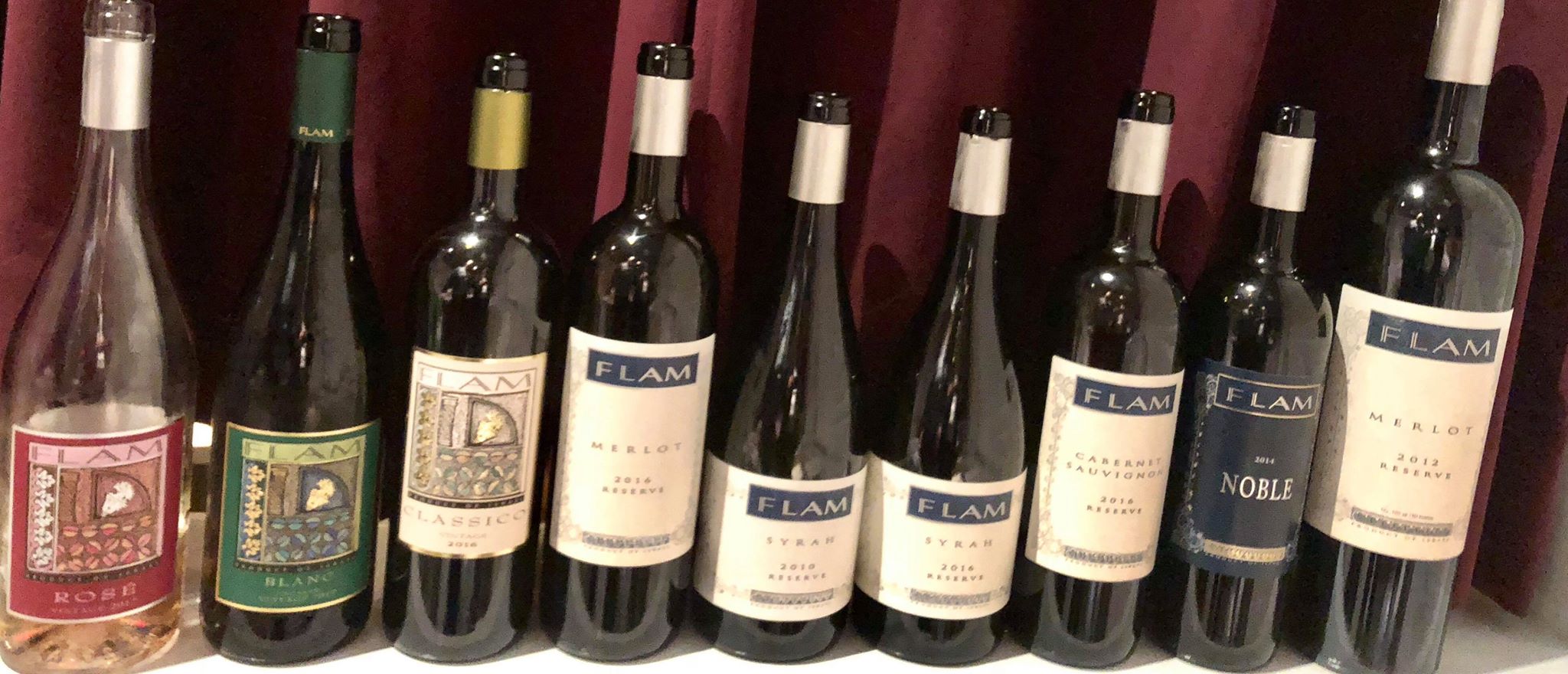
This week at Manhattan’s Noi Due Carne, a 20th anniversary wine pairing dinner was held with Gilad Flam, the public face of the Flam Winery, a�high-end, family-owned boutique winery cushioned in the lush Judean Hills just outside of Jerusalem.

One of the key points Flam made during the evening was that while twenty years was a milestone, the winery still considers itself young. The family has taken time to understand and build up the terroir for growing grapes, particularly in regions considered “the new world” in term of wine, like Israel. “When we are talking about the terroir, the climate, altitude and soil, we are looking at the relationship between the winemaker and the land. We have to watch, learn and study; it takes a lot of years,” he said.
Flam’s reputation for elegance and quality has long preceded the dinner. Since attaining kosher certification in 2010, Flam’s wines have been on every kosher wine list of note annually, even though they are generally not served in restaurants as Flam makes no mevushal wines. In various tastings over the past two years, I’ve especially found their stunning, refreshing rosé, blended from cabernet franc and syrah, and Classico, Flam’s entry-level Bordeaux blend, to be heights above other wines in their class. Particularly the Classico, which retails for around $30; I am just not aware of a better made wine at such a price point.��
Flam’s wines, while certainly at the higher end in terms of retail price, are consistently of impressive quality from year to year, and are therefore good buys for anyone wishing to impress a host or to serve at a meal like Thanksgiving. Gilad’s brother Golan, who trained as a winemaker in Italy, and their father—wine legend Israel Flam, chief winemaker at Carmel for decades—are known to say their wines are constructed as gastronomic wines; that is, meant to be served with food. The fall flavors that Noi Due’s Chef Beau Houck utilized in his culinary choices for his mediterranean seasonal dinner were an inspired match.
From the rosé we tasted as an apéritif, all the way to the reserve merlot, and especially in their blends such as the Classico and the Flam Noble, the winery’s higher-end Bordeaux blend, the wines’ overall style of balanced acidity, with a restrained, more European sensibility in terms of being enjoyed only in the context of accompanying foods, showed through. These are old world wines made with new world grapes.��
Flam also spoke of the winery estate’s location, and the benefit the grapes gain from the cooler, mediterranean climates and the higher elevations of the Judean Hills relative to the rest of Israel. Particularly in years like 2016, when there was a rainy winter followed by a mild summer: “The higher altitude leads to more elegant wines with less sugar, which gives them better acidity. We are looking for less ‘fruit bombs;’ this is the challenge we are facing,” he said. He explained that, in particular, there are hectares of the vineyards that are literally “boxed in” by the hills, thus leading to cooler, more misty mornings and to mornings retaining their cool temperatures for longer portions of the day.� �
For the first course, Houck served a salad of tuna crudo with orange sections and sea salt and topped with scallions, serrano peppers, julienned radishes and halved olives, with a touch of herb and lightly roasted whole pistachios on top. The raw tuna was so fresh that the imaginative combination of fruit, vegetables and nuts elevated it to a true triumph. No joke; This is a dish I could eat every day for a month. The Flam Blanc 2017, an unoaked blend of sauvignon blanc and chardonnay, was the perfect accompaniment. The wine has subtle notes of citrus, so it was snappy but didn’t overpowering the delicate tuna. It’s clear this wine is a smart pairing for salads, particularly if that salad contains a citrus element to elevate and highlight those notes in the wine.� �
Next, Houck presented a housemade merguez sausage, made with incredibly hard-to-get (and to use!) natural lamb casings, with cannellini beans, Calabrian hot chilis and Italian oregano. The Classico 2016 and the Merlot Reserve 2016 were served alongside. While I love the Classico and it’s one of my all-time favorite Bordeaux blends, it was my sense that the merlot stood up better to the hot sausage and was a much better fit out of the two. The Classico is a beautifully spiced, warm wine, with strong notes of vanilla throughout due to its barreling in 80 percent American oak. The merlot’s more bracing acidity with slightly less intense spice was more welcome to cut through the heat of the sausage. My sense is the Classico would be a great pairing to traditional, milder Thanksgiving dinners or roasts flavored with rosemary or thyme; and I’d leave the hot chilis aside if serving the Classico.
The third course offered a single—huge —housemade raviolo, stuffed with melty shredded beef short ribs and an egg yolk inside that broke as one sliced into the pasta. It was served in a red wine reduction, with diced root vegetables, and alongside a pair of Syrah Reserves; the 2010 and 2016. Both were wonderful balances with the red meat and pasta. The syrah itself, which Flam describes as their opportunity to be “a little more funky,” was floral and a bit more fruit-forward, with some background of oak, giving it a lighter viscosity and nice quaffability.
The main course of a za’atar-rubbed lamb chop on a base of parsnip puree and a pomegranate reduction was served alongside a trio of great wines: the Cabernet Sauvignon Reserve 2016, the Merlot Reserve 2012 and the Noble 2014, which is their higher-end Bordeaux blend. All of the wines were beautiful accompaniments to the lamb, and every taste was a near-perfect bite followed by a near-perfect sip. Particularly, the Noble carried that old world scent of “barnyard,” or as I used to call it, “cellar funk,” which I spoke with Royal Wine’s Gabriel Geller about at some length. I have tasted this note, generally in the background/close-to-aftertaste in older wines generally from France and Italy. He explained this is a desirable quality in a wine which many newer tasters, such as myself, sometimes aren’t as quick recognize or appreciate. In younger, California and other new world wines, these flavors, product of the wine’s aging, come through as leather or tobacco.� � �
With the group having enjoyed truly impeccable wines with a meal as well-planned as it was presented, Flam noted that the “family aspect” of his winery was one of the most important factors in its quality. With his brother working as lead winemaker, his father functioning essentially as a senior-level winemaking consultant/visionary, his sister Gefen working as art and graphic designer and his mother as CFO, the family all take pride in their roles; all of which contribute to the winery’s success. “When it’s your name on the bottle, it makes all the difference,” he said.
We could tell that Chef Houck certainly made the most of fall flavors. The meal ended with a charming meringue-covered miniature pumpkin, filled with a cold brulee flavored with pumpkin and vanilla bean. Definitely unique and a fun way to end the dinner, and a wonderful toast to Flam’s next 20 years.
Special thanks to Gilad Flam, Yossie Horwitz of Yossie’s Corkboard for sharing his photos, to Royal Wine’s Gabriel Geller and Jay Buchsbaum for sharing their wine knowledge, and for Golan Chetrit, owner of Noi Due Carne, for hosting the event and showcasing excellent foods to pair with the wines.� �










